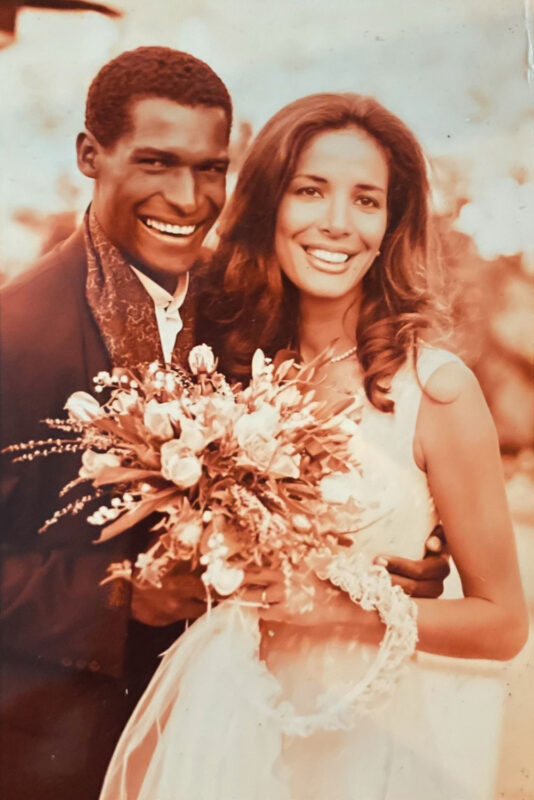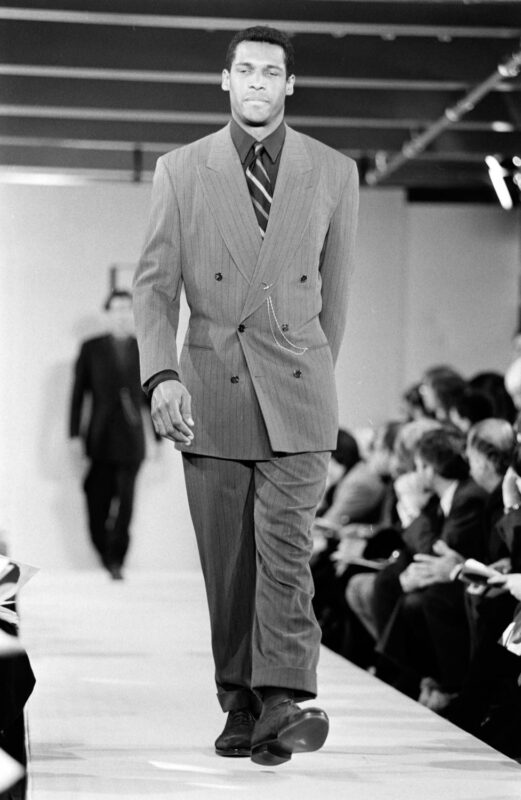
Food & Drink
Alvin & Friends
Former model Alvin Clayton is the heart and soul of his New Rochelle restaurant.
Every community needs a hub. A spot where the neighborhood gathers for laughs, jokes, a good meal, a nice drink, a place where locals know they can just come and grab a seat at the bar and probably find someone they want to talk to next to them. In New Rochelle for the past 12 years, that spot has been the jazz club and family–run restaurant, Alvin & Friends.
Alvin & Friends is the kind of place that feels like you’ve stumbled on a secret club, but one that somehow embraces all who come through its door—so known for its convivial atmosphere that everyone from Supreme Court Justice Sonia Sotomayor and Hillary Clinton to Sunny Hostin of The View are big patrons. Ditto James Beard Award-winning chef Alexander Smalls, and Meta’s Alvin Bowles. They come often and they stay late. It’s that kind of place.
Alvin & Friends is as much about Alvin Clayton and his wife of 30 years, Gwen, as it is about their celebrated fried chicken or Caribbean Island rum punches. Alvin is the unequivocal heart and soul of his restaurant. Easily recognizable, his 6 feet 2-inch frame adorned with a tall beret and suit, his handsome face open and always smiling, Alvin adores his customers and his love of them is what gives the restaurant such a happy atmosphere.
It was not obvious from his start in life that Alvin was destined to become a restaurateur. Born in Trinidad to a single, widowed dressmaker from Trinidad, Alvin moved with his mother and four siblings to Maryland when he was 14. His mother managed to put all five of her children through private school while working multiple jobs. As the eldest child and a gifted soccer player, he would often go straight from practice after school to meet his mother and help her clean offices at night.
Alvin won a soccer scholarship to Mount St. Mary’s University where he was an all-American and studied English education and psychology. He had considered becoming a guidance counselor but was drafted for San Diego soccer. That year, however, the National American Soccer Leagues folded due to a lack of support.
A friend had mentioned he thought Alvin could model and—without much of a Plan B— Alvin took up his offer of an introduction to Wilhelmina, the fabled NYC modeling agency who repped the likes of Beverly Johnson and Patti Hanson.


Alvin got steady work but nothing of great note until he was booked for a photo shoot with legendary photographer Arthur Elgort for GQ. Unlike most models, who perfected a scowl for the camera—“the look like somebody just killed your dog or something,” jokes Alvin—he didn’t pout, and remained his smiling self. The shoot went so well he was booked for additional pages. In the end, Alvin’s two shoots ran over eight pages, making him the first person of color to have that many full pages in the magazine.
He became a sought-after model in New York, and he never forgot the work his mother put in to get him there. He also never took his success for granted. “I know how hard work is and I was always very professional. I was that guy, always on time for my bookings. Models are there smiling and making all this money,” said Alvin. “I was the model who would help the stylist take the stuff off the bus, because I knew they had a long day, and they’re making less money than I did. That type of attitude is probably why I had a 25 plus-year career.”
In the 1980s, male models needed to be seen at clubs and parties. Promoters would come to agencies, ask models what their favorite clubs were, and put them on the guest list. Even if the line snaked around the block, bouncers pulled them to the front. Meals were often comped, and Alvin was upgraded whenever he flew. “We were the stars in New York,” he says, “We had carte blanche back then.”
Alvin was snapped by Andy Warhol at Danceteria and met Bono by the pool in Beverly Hills. He likes to tell the stories but never set great store by these chance encounters. “I’m not impressed by people’s celebrity status. I always felt blessed, but I always knew that there could be a hundred people doing what I’m doing. I never bought my own press.” People partied hard and drugs were around but that was never Alvin’s thing. He would go out for a few hours, hit the dance floor hard and then head home around 2:00 a.m.


One of these nights out led him to Gwen, a University of South California grad who worked for VH1. Gwen walked into the club Rex where Alvin was with some friends. “That’s a beautiful girl”, he thought, and was immediately smitten. Their first date was at the Coffee Shop on 14th Street, owned and operated by Wilhelmina. This year is their 30th wedding anniversary and they have four children: Timothy 33—from a previous relationship of Alvin’s—Matisse, 26, Oliver, 24, and Bella, 22.
Life was going pretty well but Alvin was aware that there was a ticking clock on his career as a model. His first passion, which was art, was not a consideration as a serious career. “Growing up with Caribbean parents, I couldn’t say I wanted to be an artist.
However, on a trip to Paris, Alvin visited the Musee d’Orsay, “And I fell in love, absolutely fell in love with the paintings of Henry Matisse. For six months I started copying Matisse’s paintings to teach myself how to paint,” he said. “I never showed anybody my work.” But one of his agents from Wilhelmina came over one day and loved the art. She introduced him to Lee Arthur and two months later Alvin had a show at her gallery. All 27 works sold.
Elsa Klench from CNN’s House of Style did a segment and his work has been featured at the Smithsonian Institute of African-American Art. (His art adorns the walls of the restaurant, and he talks with enduring passion about it. He still paints until 2:00 or 3:00 a.m. after closing up the restaurant.)
As much as art was a presence in his life, Alvin knew he needed to find a steadier profession after 15 years of modeling. Gail O’Neill, his “model wife” as he jokingly called her, suggested he meet her then-boyfriend, Brad Johnson, whose father was in the restaurant business. Alvin thought, “Well, I like to cook . . .”


Johnson was opening a restaurant in Los Angeles—Georgia on Melrose Avenue—and invited Alvin to be a partner. “It turned out to be like stepping in gold again,” said Alvin. “The other investors were Denzel Washington, Eddie Murphy, Debbie Allen, and Lou Adler. They must have been like ‘Who’s this Alvin Clayton?’”
Alvin learned back of the house operations at night and continued to model during the day. The restaurant was a smash, written up by Bon Appetit and Esquire as 1993’s hottest restaurant. After seven successful years, however, they had to close it. The partners made the mistake of not buying the building and when it was sold to a new landlord, he raised the rent beyond what they could afford.
The timing was right to leave LA as Gwen and Alvin wanted to raise their family on the east coast. They chose to settle in New Rochelle almost by accident. A McDonald’s manager’s act of kindness (he fed her children despite the fact she had no money after her babysitter had accidentally locked her keys, wallet and phone in her minivan) convinced Gwen that, despite being so close to Manhattan, the town had a friendly small-town appeal.
It also, according to Gwen and Alvin, is the most diverse town in Westchester. “African Americans, Latinos, Jewish people—this is a strong community. I’ve been here for 21 years now, and I’ve never seen any racial tension,” says Gwen.
Gwen and Alvin threw themselves into the local life, fundraising for the local Boys and Girls Club, becoming part of the arts council. They joined the library board and Alvin taught art classes for Black History Month. They’d throw last-minute parties at their home. Everyone asked when they were going to open a restaurant. Finally, they took the plunge and opened in 2011.
Jazz and music were part of the makeup from the beginning, including jam sessions on Sundays. The menu was a combination of Caribbean and Southern food. Favorites were curry crab chowder, braised oxtails, pan-seared mahi-mahi, and some excellent fried chicken. The reviews came in—none better than the first one for the New York Times. They gave Alvin & Friends four stars.
Life was the busy swirl of the restaurant business, up early and to bed late seven days a week.
And then: March 2020. New Rochelle became the first COVID hot spot in New York State. Gwen and Alvin (and all the residents) were pariahs. “When you went to another town and told them you were from New Rochelle, they ran from you.”
They closed the restaurant and did a deep clean and made po’ boy sandwiches and packaged rum punches for delivery and took aid from relief programs.
There were serious struggles for Gwen and Alvin. One server who just returned to the restaurant had his leg amputated and another beloved chef had a COVID-related heart-attack. Gwen breaks down into tears when she talks about how special he was. None of us know how long the scars of COVID will take to heal but those in the restaurant/hospitality business were some of those cut the deepest. Finally, with the pandemic receding, Alvin and Friends seems to be on stable footing once again. This neighborhood joint is here to stay.
Alvin thinks the main thing about the restaurant is the people: you can have the best food in the world, and if the vibe is surly or unpleasant, you’re going out of business. “I tell my staff all the time: people have choices and they chose to be here, at least we can show our appreciation. And I think people get that.”
Hero image: Alvin and Gwen Clayton. Photo courtesy of Alvin & Friends



